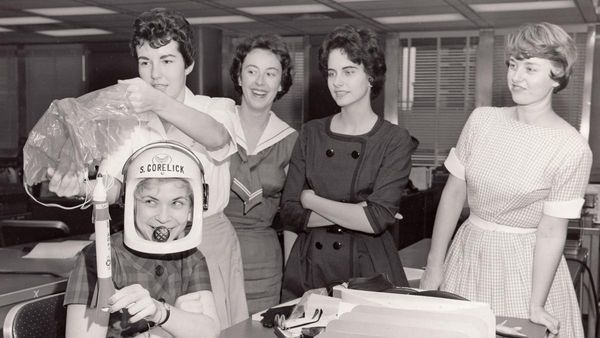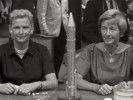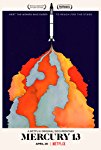Eye For Film >> Movies >> Mercury 13 (2018) Film Review
Mercury 13
Reviewed by: Jennie Kermode

In 1963, Valentine Tereshkova became the first woman to into space. It's hard today to take in quite what that meant. Differences between men and women were then perceived to be much bigger. Supposed experts spoke openly about how the delicate female constitution could not endure the G-force involved in getting into orbit. One small step for a woman became a rallying cry for womankind, helping to change attitudes in many different industries all around the world. But two years before Tereshkova had her moment, the US had its own programme for training female spacefarers. This documentary explores the story behind it, meets some of its participants, details how their ambitions were thwarted and looks at the impact they made in spite of that.
This is the kind of documentary that's perfectly suited to the Netflix way of making movies. Though modest in its artistic aims, it's a polished piece of work which has evidently benefited from the luxury of time in both the research stage and the editing suite. The first thing we notice about its stars is how good they look, elderly as they now are, with the legacy of intensive physical training written into their flesh. Muscles remain taught; posture has that military quality, also reflecting the careers in military aviation that some went on to pursue. They also have a habit of looking people directly in the eye, something women of their generation were brought up not to do, but something essential to making progress in a male-dominated field.

The tension between presenting as masculine enough for skills to be taken seriously yet feminine enough to be liked - also vital in a context where a great deal depended on making allies - is evident in what the women have to say about their experiences, and in the archive footage that carries us back to that time. Jane Hart was challenged over her pursuit of a spaceflight career because she had children, though no-one seemed to care about the prospect of a kid losing daddy. "With eight children, you’d want to go to the moon, too," she said defiantly.
Some of the women had already been through the wringer with the press over their decision to become pilots, a necessary prerequisite for the space programme but also very difficult at the time. Polished smiles and flirtatious poses softened the notion for the general public, turning it into a tale of plucky girls rather than strong willed women who might actually demand equality. Yet when one woman recalls her mother's worries we are reminded that this was an era in which parents knew that their sons could, at any time, be snatched away on the orders of the government and sent to fight in some foreign land. Girls were insurance, the children it was safe to love - the thought that they too might be at risk must have been terrifying.
If the film has a noticeable flaw, it's that little effort is made to point out these differences in historical perspective for viewers unfamiliar with them. What we see is very plain and straightforward, and often ridiculous in light of today's awareness. It's also notably tough. Gruelling training remains part of every astronaut's groundwork but in that era, before scientists had much understanding of what may or may not factor into survival in the face of heavy G and subsequent zero gravity conditions, there was a much longer list of invasive tests required. One gets the impression that this was worse for the women because they were seen as a new and exotic phenomenon, as if they'd just been invented.
That the women are all white probably goes without saying - black women remained behind the scenes doing underpaid scientific and technical work, as featured in 2016's Hidden Figures. What else do they have in common? They're articulate, sharply intelligent, and highly individualistic - they probably wouldn't have fitted in in any age, but in these circumstances they were able to use that to their advantage. They didn't let disappointment stop them. Stuck on Earth, they went on to break barriers in aviation. One of them co-founded the National Organization for Women. They paved the way for the women who would, ultimately, fly space shuttles. Unable to reach the stars, they became them.
Reviewed on: 18 Apr 2018
















